
In 2021, the circular economy became the most funded sector in private equity, with over €2.2 billion invested, almost double the previous year (Novethic). Back Market, the electronics reconditioning specialist, has made this rise possible with €726 million in two rounds of financing. The model is gradually proving its cost-effectiveness and is of increasing interest to consumers who are turning to much more frugal lifestyles and consumption patterns.
The circular economy consists in producing in a sustainable way by limiting consumption and the production of waste. It can be defined more broadly as a system that valorizes resources at each stage of their transformation. The resources can be raw materials, finished products, goods, or services (such as car-sharing). According to ADEME, the French Environment and Energy Management Agency, the functioning of this system is based on 7 pillars: sustainable supply of raw materials, eco-design of products, industrial and territorial ecological commitment, ecology of functionality, responsible consumption of products, extension of the useful life of goods and recycling of materials from products. The shift of companies from the linear to the circular model has advantages and challenges on several levels. From an economic point of view, the model allows companies to save on the costs of acquiring and transporting raw materials, which are abundantly available. This model is also a strong asset for companies as it improves their brand image and appeals to the growing number of environmentally conscious consumers. In addition, the circular economy is becoming more and more popular to comply with the increasingly strict regulations of the States in favor of ecology: the display of the lifespan of products, the development of packaging deposits, the support of the economy of functionality or the fight against waste and programmed obsolescence. In line with its March 2020 Circular Economy Action Plan, the European Commission last month presented proposals to green almost all physical goods on the EU market, with for example the introduction of ‘digital passports‘ for relevant products and ‘performance classes‘ from A to G for comparison.
Nevertheless, the circular economy model requires certain key success factors to establish effectively and sustainably. Firstly, the model must continue to prove its capacity to improve the profitability of industries, particularly those in emerging countries, which still have significant development potential in the linear model. Secondly, manufacturers need to have access to their products at the end of the cycle. Information technology can partly address this concern with for example online failure detection or monitoring of wear levels. From a macro-economic point of view, an ecosystem should enable actors to work together, facilitating shared objectives, dialogue, and alliance, sometimes even with competitors. Another important criterion is the establishment of reverse logistics channels to collect and optimally recover the considerable end-of-cycle volumes generated by the circular economy. Industrialists will be directly concerned, particularly for closed loops, but also SSE (social and solidarity economy) players and local authorities.
To this extent, several startups and large groups are developing solutions and initiatives to benefit from circular economy. A distinction can be made between operators, who try to modify their production processes and limit waste production, and companies that offer solutions to facilitate the circular economy, in terms of logistics, product monitoring, quality assessment, etc. In textiles, some large players such as Patagonia have focused on a strategic positioning allowing access to products at the end of the cycle with the presence of an “absolute guarantee” allowing the repair and modification of its articles. External startups, such as Murfy, are also choosing to penetrate this part of the value chain by encouraging consumers to repair household appliances rather than replace them with new ones. It offers three services: free tutorials on how to repair household appliances, repair by an employee technician, and an e-commerce platform for reconditioned appliances. Intending to create a circular economy ecosystem, another startup, Phenix, offers a range of solutions to companies – supermarkets, local shops, but also producers, industrialists, and wholesalers – to give a “second life” to their unsold goods, by putting them in touch with second life item collectors (charitable associations or even sales at a reduced price through a mobile app). The startup saves 120,000 meals a day, thus avoiding the production of 50 tons of waste per day. Finally, in a more global logic of recycling, several startups have contributed to the creation of the “internet of garbage“. This is the case of AMP Robotics, which raised 55 million last year and uses AI and physical robots to orchestrate sorting, picking, and placement tasks to increase recycling rates.
The circular economy holds great promise for the future. It is of increasing interest to companies in all sectors notably to reduce production costs and ensure an abundance of raw materials. It is also increasingly important for their image in the eyes of consumers who want to consume sensibly and sustainably. Finally, it is the subject of particular attention from the public authorities, who are enacting laws to act in favor of the environment and limit the production of waste.
2 Key Figures
Circular economy revenues in the plastic packaging recycling market are expected to have a CAGR of 9.1% between 2019 and 2030
The market revenue is estimated at $13.1 billion – Research And Markets
750 funded companies & + $3B invested in last 2 years in circular economy
Traxcn
3 startups to draw inspiration from

Murfy
Murfy, created in 2017, has undertaken the mission of solving the overconsumption of household appliances, via the circular economy. It thus offers three services: free tutorials to repair one’s own household appliances, repair by an employed technician, and an e-commerce platform for reconditioned appliances. In one year, Murfy has tripled its turnover to €3.5 million in 2020.

Phenix
Phenix has developed a platform to connect generators and collectors of second life items. The platform, Phenix Exchange, connects waste generators, ie companies and industries that want to sell off their old items, to agencies that wish to buy these items. These include recycling companies, NGOs etc. The startup raised $17,2M in 2018.

Centrical
The American startup has developed an artificial intelligence-based waste sorting robot which picks recyclable materials off a conveyor belt in mixed waste, construction & demolition waste, and e-waste facilities. AI-technology is used to identify the waste material and machine learning platform keeps record of types of materials identified. The startup raised $55M in 2020.
Interested in a startup landscape or in an insights report?
Please fill out our contact form so that we can get back to you very quickly with our product offer.
Want to subscribe to our 123Fab?
Fill out our form to receive the latest insights into your inbox.
123Fab #82
1 topic, 2 key figures, 3 startups to draw inspiration from

On 8 February this year, 12 EU member states affirmed their desire to launch an IPCEI (Important Project of Common European Interest) on developing a sovereign cloud in Europe. These countries include Germany, Belgium, Spain, Italy, and France, which plan to contribute 300 million euros to the project, estimated at 7 billion euros. The first objective is to guarantee the protection and security of European users’ data. Indeed, most web hosting companies in the cloud are currently owned by American companies, with GAFAM controlling 70% of the European market. They are therefore subject to the Cloud Act, the US federal law on access to communications data, which obliges providers to disclose all information in their possession upon request from the US judiciary, regardless of whether the data is hosted in the US or in a third country, which violates the EU’s General Data Protection Regulation (GDPR). The other objective is to compete with industry behemoths such as Google or AWS and reduce European dependence on US companies from a commercial point of view.
The explosion of the cloud in recent years is due to its many advantages: it makes all data accessible from any terminal very quickly and, in theory, also prevents it from being lost, even if the hardware storing it is damaged. It is largely dominated by the American giants, mainly Amazon, which holds over 30% of the market, Microsoft, and Google. Their dominance is often decried, and this week Reuters reported that the European Commission has opened an investigation into Microsoft’s potentially anti-competitive practices in the cloud sector. A few large European players still manage to emerge such as Deutsche Telekom, OVHcloud, SAP, or Orange as well as smaller cloud providers like pCloud, Oodrive, or Leviia.
However, the principle of remote storage raises questions of security, reliability, and confidentiality. Thus, standards have been developed such as ISO 27001 to ensure that the operator guarantees a good level of data security. In France, the government supports the “trusted cloud” label, which lays the foundations for high technical and legal standards, such as the mandatory SecNumCloud security level issued by the ANSSI (the French information system security agency). The logic is the same in other countries, for example in Germany. T-Systems and Google Cloud have announced that they will create and provide sovereign cloud services for businesses, the public sector, and healthcare organizations. Cloud computing also poses problems of dependence, on the one hand on the supplier, particularly in terms of ownership of data and functionalities, and on the other hand on the Internet, since a connection is required to use cloud computing. Furthermore, from an environmental point of view, the exponential development of cloud computing has a huge impact on global electricity consumption and also generated carbon dioxide: data centers worldwide consumed around 200 TWh in 2018, or about 1% of global electricity use.
In response to these limitations of the cloud, several startups have emerged to offer answers and attempt to occupy this growing market. For instance, this week, Intel announced plans to acquire Israeli cloud optimization startup Granulate for $650 million. The startup continuously optimizes the operating system resource manager to drastically improve performance, reduce costs by around 60%, and increase capacity in both on-premises and cloud environments, without any code changes. With the same aim of optimizing costs and performance, startup Iceotope has developed chassis-level liquid cooling solutions to reduce energy and water consumption, as well as the design, construction, and operating costs of cloud data centers. At the crossroads of energy optimization, sovereign cloud, and server storage management, Qarnot Computing proposes to use the heat emitted by micro-processors to heat offices, social housing, or colleges. The computing power is then 2 to 4 times cheaper than that offered by public cloud providers such as AWS, Microsoft Azure, or OVHCloud since the cost of the infrastructure is financed by the customer. Qarnot’s digital boiler consists of 24 processors and can, for example, heat water to over 60°C. When it comes to the growing demand for security, startups are leading the way. US-based cybersecurity company Rapid7 has confirmed its investment in the cloud with the acquisition of Israeli startup Alcide, a leading Kubernetes security provider, and DivvyCloud, a cloud security and governance startup. To ensure infrastructure and data security and entrust its management to the data user, startup Fortanix offers a solution for multiple public clouds and hybrid environments via a single platform and its technology, Runtime Encryption.
The cloud is therefore ultimately a solution full of promise, dominated by a few large players but bringing together a very innovative ecosystem. Start-ups play a key role in meeting the challenges, particularly in terms of security and environmental impact, and there are more and more of them developing in this area.
2 Key Figures
The cloud computing market size is expected to grow from $445.3 billion in 2021 to $947.3 billion by 2026, at a CAGR of 16.3%
MarketsAndMarkets
+ $3B invested in cloud security in last two years
Tracxn
3 startups to draw inspiration from

Iceotope
The British startup has developed liquid cooling systems suitable for traditionally high power and high-performance computing (HPC) workloads. The systems wrap each server blade in a metal case filled with dielectric coolant, helping avoid the costs and carbon emissions associated with the need to cool the entire data center.

Qarnot Computing
The French startup provides a cloud-based radiator computer that produces free and eco-friendly heat sourced from IT processors. Through dispatching software, the company offers performant and secure cloud computing services. QRad provides energy-efficient green heating for buildings in every room by installing sensors.
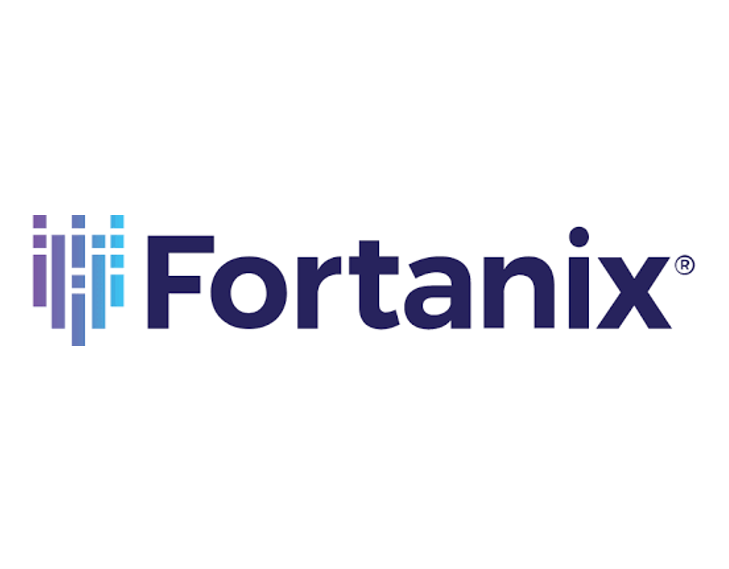
Fortanix
The American startup is a cloud data security solutions provider. The features of the product include data privacy and management, multi-cloud key management, data encryption, network virtualization, secure access control, etc. The startup receives the Cybersecurity Excellence Gold Award.
Interested in a startup landscape or in an insights report?
Please fill out our contact form so that we can get back to you very quickly with our product offer.
Want to subscribe to our 123Fab?
Fill out our form to receive the latest insights into your inbox.
123Fab #81
1 topic, 2 key figures, 3 startups to draw inspiration from
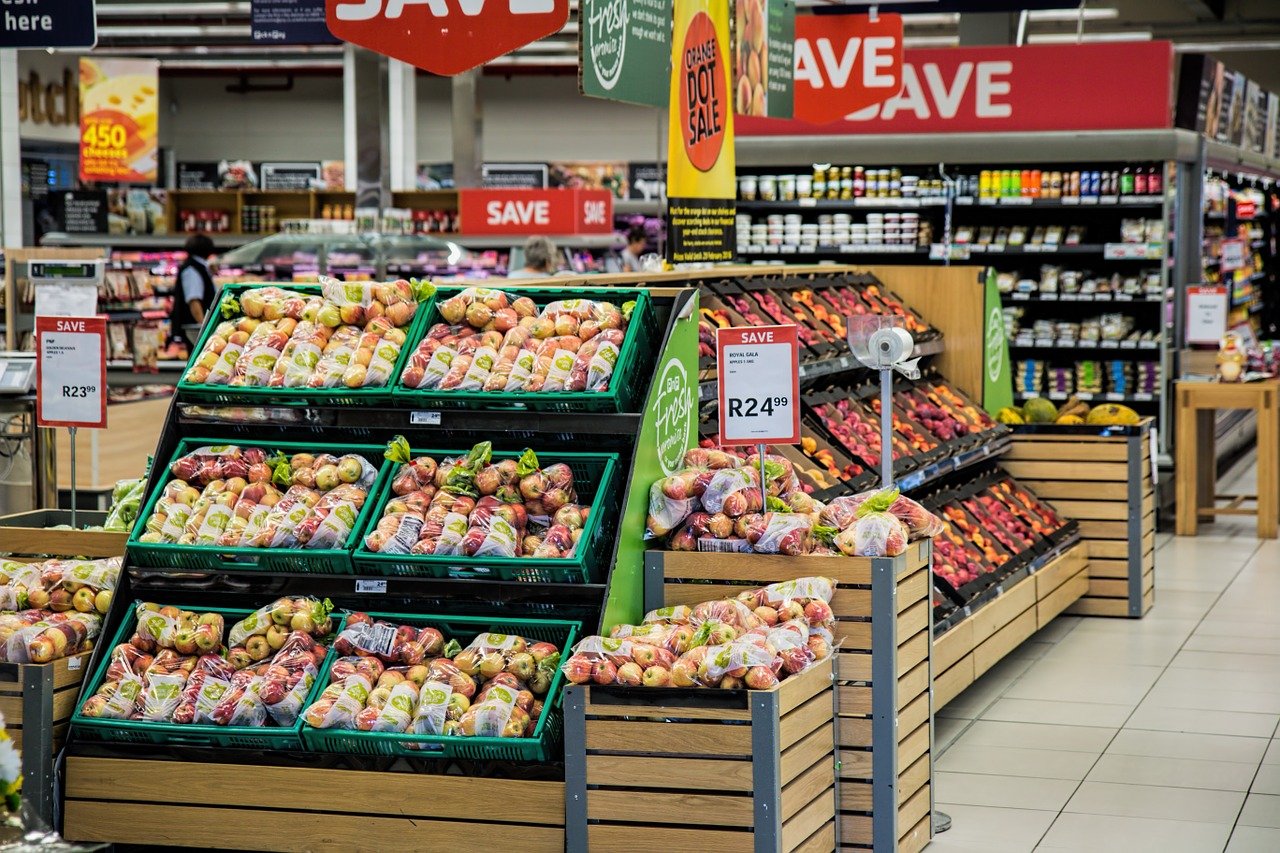
A 2018 survey by Trace One reveals that while 91% of consumers think it is important to know where their food comes from, only 12% are fully confident in the safety and quality of their food. As a result, many food companies such as Carrefour, Walmart, Nestlé, or Unilever have implemented initiatives to improve the traceability and transparency of their products in response to consumers’ lack of trust and desire for healthier and higher quality products. At the same time, traceability is key for producers, as it guarantees the quality of the raw material that is introduced into the food chain, allowing certification and accreditation of their products, quickly locating problematic elements, and setting up control systems. It also facilitates the economic management of farms since it requires a detailed history of interventions, products used, and agronomic results. Therefore it has become a major issue for consumers and producers, but also for states, for health surveillance purposes and supply concerns. As such, in France, the law on the future of agriculture voted in September 2014, introduces the obligation of traceability for all phytosanitary products. Thus, throughout the supply chain, each product used must be identified (batch number, date of manufacture, etc.) and this code is transmitted to each new actor up to the final consumer.
Food traceability is defined by the ability to track the movement of a product and its ingredients through all stages of the supply chain, upstream and downstream. It involves documenting and linking the production, processing, and distribution chain of food products and their ingredients. This is a real challenge. Firstly, because of global sourcing, which does not always allow for great visibility and transparency of production processes. But also because of the lack of unifying requirements in different geographical areas regarding handling, storage, inspection, and safety standards. From a logistical point of view, many products are sold individually and questions arise as to the scale of traceability (by unit? by pallet? at the product level?), which has a significant cost. To this extent, it is also an economic challenge because, although the demand for transparency is often driven by consumer desire, it is not clear that consumers are willing to pay this cost, nor are supermarkets, which already make low margins on food products.
The main vehicle for traceability of agricultural products is labeling, with information on, for example, origin, ingredients, or farming practices. But the reliability of labels has limits, both from a practical point of view and in terms of the veracity of the information. With the growing number of food certifications, and the constraints in terms of traceability becoming stricter, new tools are emerging at the initiative of large groups or start-ups. For example, Walmart, with the help of its technology partner IBM, created in 2016 a food traceability system based on the Hyperledger Fabric blockchain, at a time when the number of start-ups in this field was booming. The time needed to trace the origin of mangoes produced in the United States was reduced from 7 days to 2.2 seconds thanks to this system, which is now used on many products. Carrefour is also a pioneer on this topic in Europe with the first application of its own blockchain technology to the Filière Qualité Carrefour (FQC) products in March 2018. The group plans to have deployed it on all 100 products by the end of 2022. Indeed, blockchain is one of the most convincing answers to the challenge of food supply traceability, because it makes it possible to record in a decentralized and unforgeable digital register all the useful information on the origin of a product, its manufacturing and storage conditions, and the various stages of its transport.
Numerous other solutions are emerging, notably at the initiative of start-ups to ensure traceability in agriculture and consumption. For example, the World Wildlife Fund has partnered with BCG Digital Ventures and social capital investors to create OpenSC, a startup that allows businesses and consumers to verify specific claims about a product’s sustainability and ethical production. The platform uses many different technologies, including IoT sensors, machine learning, and blockchain, to trace the movement of food through its supply chain and share this history with businesses and consumers. Other solutions are implemented directly on farms, such as Farmer’s Hive, which uses IoT sensors to collect all kinds of information to improve farm management (air temperature, humidity, atmospheric pressure, etc.) and traceability by generating a unique QR code to track activities from the producer to the end-user. This makes possible, for example, the tracking of environmental conditions and location when the product is in transit. Further down the production chain, Zest HACCP is an application specifically designed to ensure health traceability. It generates its own barcodes directly on the labels to create a chain of custody and automate shelf and stock management, take temperature readings using sensors and produce statistical reports.
Food traceability is becoming an increasingly important market, driven by consumer demand for transparency and government regulations. Increasing labels and certifications are being created to promote healthy and responsible agricultural products. In addition, traceability helps to improve supply chains and farm management, but also to avoid fraud and limit food waste. It is therefore beneficial to all and will certainly continue to be a key issue in the years to come.
2 Key Figures
The food traceability market size is projected to reach $26.1 billion by 2025, recording a CAGR of 9.1%
It was valued $16.8 billion in 2020 – MarketsandMarkets
$118M million of total funding in food traceability
Tracxn
3 startups to draw inspiration from

OpenSC
The Australian startup uses blockchain technology to allow consumers to verify the provenance of products they are purchasing by scanning a QR code. Its main aim is to provide consumers with the confidence that these products are ethical, legally compliant and environmentally friendly. The blockchain technology ensures the data cannot be tampered with.

Farmer’s Hive
The Canadian startup has developed a farm management software platform. The technology uses lightweight wireless hardware sensor nodes that allow remote access to real-time information such as soil moisture measurement, enabling the user to make informed decisions. Each food item has a QR code that follows it throughout its life and records information for the end consumer.
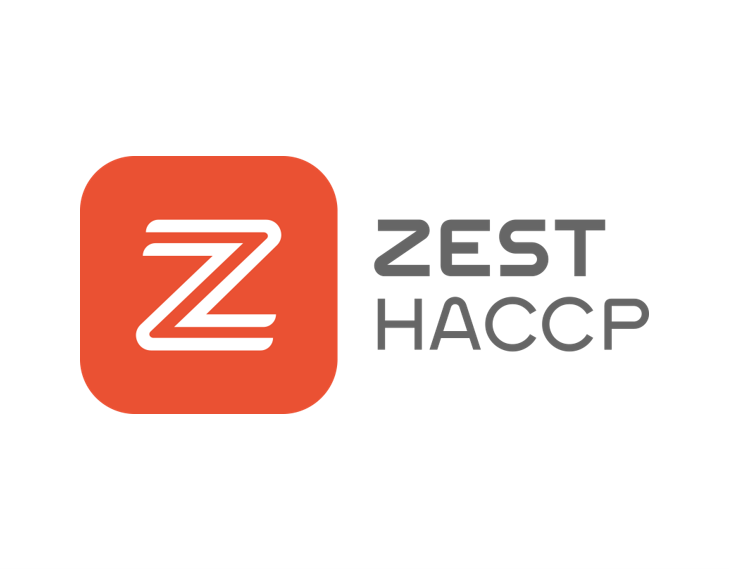
Zest HACCP
The French startup Zest HACCP is a platform that creates its own traceability chain from barcodes. It enables to manage shelves, stocks, take temperature readings, produce activity reports, manage use-by dates and comply with European health standards. The solution is already deployed throughout France with over 1200 active licenses. It was acquired in 2020 by Phytocontrol Group.
Interested in a startup landscape or in an insights report?
Please fill out our contact form so that we can get back to you very quickly with our product offer.
Want to subscribe to our 123Fab?
Fill out our form to receive the latest insights into your inbox.
123Fab #80
1 topic, 2 key figures, 3 startups to draw inspiration from

At least 14 million tonnes of plastic end up in our oceans each year, and plastic accounts for 80% of all marine debris, from surface waters to deep-sea sediments. By 2050, it is predicted that there will be more tonnes of plastic in the oceans than fish, posing a serious threat to our ecosystems and our health. Three of the seventeen United Nations Sustainable Goals are dedicated to tackling the problem of plastic waste: responsible consumption and production, climate action and marine life. To this end, alternatives to plastic have been emerging for several years, driven by governments, including biomaterials, also known as bio-based materials.
Biomaterials are biomass-based raw materials. They include cells, molecules or extracellular matrices but also natural textiles, leather, wood, paper or silk. They are used in everyday life, for example in packaging, clothing and furniture. But in recent years, a new use for biomaterials has emerged as an alternative to fossil-based materials, for example in the production of plastic. These are known as “sustainable biomaterials” and plastic manufactured from sustainable biomaterials is known as bioplastic. But not all bioplastics are equal: some are partly bio-based and not all are biodegradable, such as bio-based polyethylene (PE) or polypropylene (PP). However, bioplastics have the unique advantage over conventional plastics of reducing the dependency on fossil resources and lowering greenhouse gas emissions over their lifetime. Indeed, they have the potential to reduce 30-70% of carbon dioxide emissions and their production requires 65% less energy than conventional petroleum plastic (Allied Market Research). They also offer new recycling perspectives and opportunities for the circular economy.
For these reasons, various governments across the world are adopting favorable regulations and policies to promote the sustainability and biodegradability of bioplastics. This is one of the key drivers of the market that explains its growth in recent years. For example, the European Union launched a public consultation on this topic in January. The US government announced its plastic pollution control programs, in February, which include increased research, development and buyer/consumer awareness of bioplastics. Currently, bioplastics account for about 1% of the approximately 360 million tonnes of plastic produced annually.
However, bioplastic production has its limits and still needs to be further developed in order to have a neutral environmental impact, especially when looking at the life cycle of materials. Indeed, the production of bioplastics sometimes requires intensive land use, often combined with the use of fertilizers and pesticides. To transform organic material into plastic, chemical treatments are also necessary. An example is B-PET (bio-based polyethylene terephthalate), a hybrid plastic derived from sugar cane, which combines the negative impacts of agriculture and chemical processing. In addition, bioplastics generally require high-temperature industrial composting facilities to decompose, which very few cities have. In this case, recycling or decomposition is limited. Finally, bioplastics are also relatively expensive. For example, PLA (polylactic acid) can be 20-50% more expensive than comparable materials due to the complex process used to convert maize or sugar cane, while it is less robust than fossil fuel-based polymers.
In response to this, several groups and start-ups are trying to innovate in this field, notably by selecting raw materials. This is the case of the Californian start-up Mango Materials, which creates bioplastic from the methane gas of wastewater treatment plants or landfills. Similarly, Made of air uses forest and farm waste to produce bioplastics. Fundraising is also accelerating in this sector. In December 2021, UBQ materials, which produces bio-based thermoplastic materials from 100% unsorted household waste, raised a $170 million funding round. The solution substitutes oil-based plastics, wood, or metal in various applications: construction, automotive, logistics, retail, 3D printing. Other startups focus on the other end of the value chain, on decomposition or recycling. This is the case of TIPA, which manufactures bio-based and fully compostable packaging for the food and fashion industry. The materials decompose in the same way as food waste, within a maximum of 180 days.
Finally, biomaterials, and especially bioplastics, represent a growing opportunity for the future to limit the use of fossil resources and reduce greenhouse gas emissions. Although they are not yet capable of replacing all the different uses of plastics (resistance to humidity, temperature, breakability, etc.) and their impact on the environment is questionable when the entire value chain is taken into account, a great deal of progress has been made in recent years. The market is growing and initiatives from startups are flourishing, which is a good omen for the future.
2 Key Figures
The global bioplastics market is projected to reach $16.8 billion by 2030, growing at a CAGR of 11.5% from 2021 to 2030
It was valued at $5.8 billion in 2020 – Allied Market Research
$561M raised in the last 2 years by waste-based bioplastics
Tracxn
3 startups to draw inspiration from
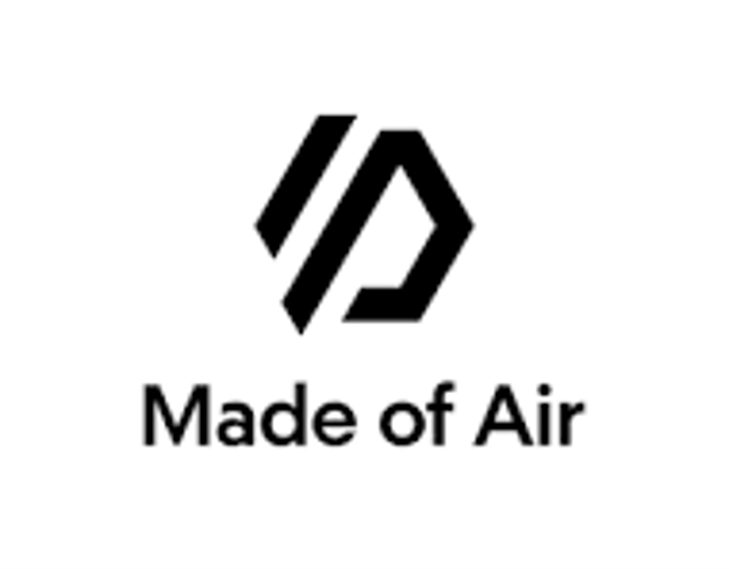
Made of air
The Berlin startup has developed a bioplastic made of forest and farm waste that sequesters carbon and can be used for everything from furniture to building facades. The recyclable material is 90% carbon and stores around two tonnes of carbon dioxide equivalent for every tonne of plastic, more than it emits throughout its lifecycle.
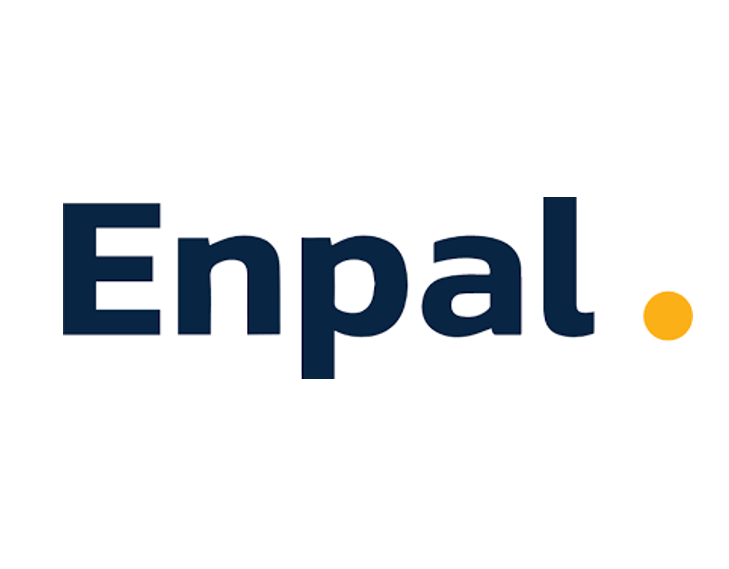
UBQ materials
The Israeli cleantech startup converts unsorted household waste into a bio-based thermoplastic composite. The product is a raw material that can substitute wood, concrete, or oil-based plastics in the manufacturing of durable products.

TIPA
The Israeli startup manufactures bio-based and fully compostable packaging for the food and fashion industry. The material used for the packaging is a patent-protected sheet combining plant-based and petroleum-based composition which decomposes under compost conditions in 180 days.
Interested in a startup landscape or in an insights report?
Please fill out our contact form so that we can get back to you very quickly with our product offer.
Want to subscribe to our 123Fab?
Fill out our form to receive the latest insights into your inbox.
123Fab #79
1 topic, 2 key figures, 3 startups to draw inspiration from

In early March, the price of natural gas in Europe hit an all-time high due to tensions between Ukraine and Russia, reaching €345 per megawatt-hour. In response, the EU proposed the REPowerEU plan, to increase the resilience of its energy system, and plans to cut imports from Russia by two-thirds this year. Alternative energy sources like solar, hydrogen and next-generation nuclear are in the spotlight. To that extent, solar is seen as one of the fastest replacements for Russia’s supply. The Commission estimates that by accelerating the rollout of rooftop solar photovoltaic systems to 15TWh this year, the EU could save an additional 2.5 billion cubic meters (bcm) of gas (155 bcm of gas was imported from Russia in 2021). Overall, solar energy seems to be an essential way for Europe to wean itself off Russian gas and it has become a priority for governments in a very short time. Start-ups and players in the sector have understood this well.
Solar energy is already well represented in the European energy mix, reaching a record 10% of total electricity last summer with a 34% increase in solar PV capacity compared to 2020. It is particularly popular with companies and individuals for its profitability. In 2020, 16% of the French photovoltaic park was composed of residential roofs, with a power of less than 9 kWp. Depending on the technology of the panels used, their power, the geographical area of implantation, the orientation, the inclination or the materials of the solar kit, the yield of the photovoltaic panels can vary from 6 to 24%. This puts them slightly below wind turbine efficiencies, which vary from 20 to 35%. The issue of efficiency is closely related to the recurring questions about the reliability of solar panels. Indeed, any change in the availability and intensity of sunlight has an impact. Technology has addressed this issue with battery storage options for off-grid systems. By storing excess solar energy in batteries, energy can continue to be distributed when there is no sun to power the panels.
Startups have played a key role in this sector in providing answers to the various limitations of solar panels, especially from a BtoC perspective. This is the case of Pika Energy, acquired in 2019 by Generac, which offers a complete platform dedicated to energy management and storage. The startup ensures an efficient flow of energy between the smart battery, the solar cells and the building, to produce energy continuously. Another well-known limitation to the efficiency of photovoltaics is the dust and dirt that can accumulate on the solar panels. In response to this, the startup Pellucere has developed the MoreSun product, which adds an anti-reflection and anti-fouling silica screen to solar panels. Field tests of the startup’s solution have shown energy gains ranging from 3.5% to 4.1%. Another startup, Inti-Tech has developed semi-autonomous and autonomous cleaning systems that clean solar farms without the need for infrastructure changes, with absolutely no water and fewer people than traditional cleaning methods.
The growing need for solar energy is also leading to increased fundraising in the sector, notably through the creation of funds dedicated to the transition from fossil fuels to clean energy, such as Gaia Impact Fund or Energy Transition Ventures. Germany-based company Enpal has raised the most venture capital so far, following a €150 million investment by Japanese venture capital fund SoftBank six months ago. Its BtoC solution is full stack: it sources its solar panels, modules, batteries and inverters directly from China, employs all the installers and has also created its own software. Another startup, Otovo, raised €30m in February. Its solution is a kind of marketplace: Otovo does not install its own solar panels but instead uses local contractors.
It seems that the crisis in Ukraine has been an accelerator for renewable energies, and in particular solar energy. Green energy has jumped really quickly from the ESG budget to the national security budget. This is especially true for countries that were highly dependent on eastern energy, such as Germany, where total solar PV capacity reached 59 gigawatts in 2021 and is expected to rise to 200 gigawatts in 2030. This opens many doors for players in the sector, especially in the installation and recycling of these solar panels, which will become a central issue for the next decade.
2 Key Figures
The solar energy market is expected to reach $200 billion by 2026, growing at a CAGR of 20% between 2020 and 2026
It was estimated to be worth $50 billion in 2019 – GlobeNewswire
+1,300 Funding Rounds in solar energy
In the last 10 years – Tracxn 2021
3 startups to draw inspiration from
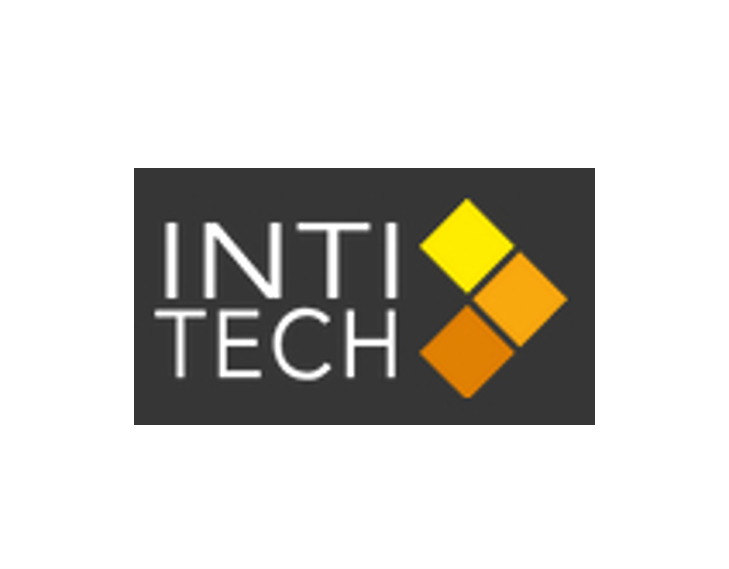
Inti-Tech
The chilean startup has developed an electro-mechanic device to make more efficient the operation of solar photovoltaic plants. It offers an automatic, high-frequency and eco-friendly cleaning service to stop the efficiency loss caused by dirt over the surface of PV modules. One robot per array of panels is permanently installed to clean with no human intervention.

Enpal
The German startup uses AI for provisioning and installing solar panels. The whole provisioning part of the installation is done remotely with AI-based algorithm. An app allows consumers to measure their energy gathering, storage and consumption, and to pay for services. They pay rent on the solar panels and for the all-round service.
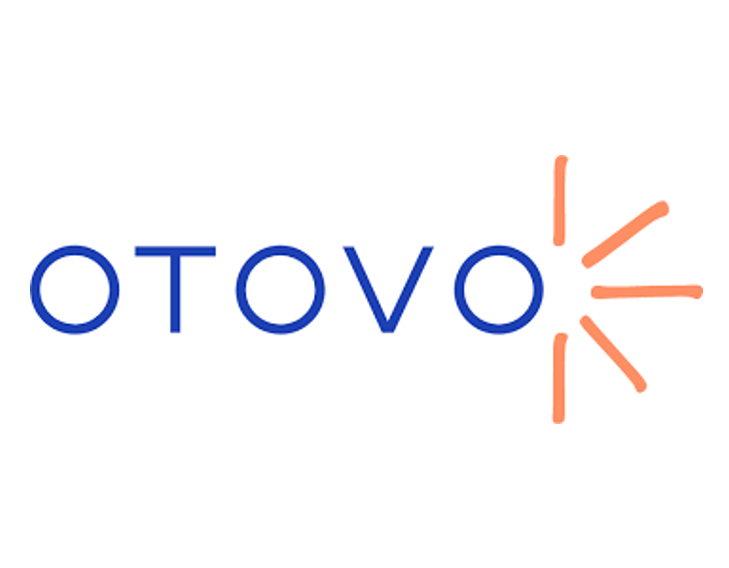
Otovo
The Norwegian startup connects solar energy installers with homeowners who want to put solar panels on their roof. The solution analyses the potential of any home and finds the best price and installer for customers based on an automatic bidding process between available installers. Otovo has more than 12,000 customers and expects to add 10,000 new customers in 2022.
Interested in a startup landscape or in an insights report?
Please fill out our contact form so that we can get back to you very quickly with our product offer.
Want to subscribe to our 123Fab?
Fill out our form to receive the latest insights into your inbox.
123Fab #78
1 topic, 2 key figures, 3 startups to draw inspiration from
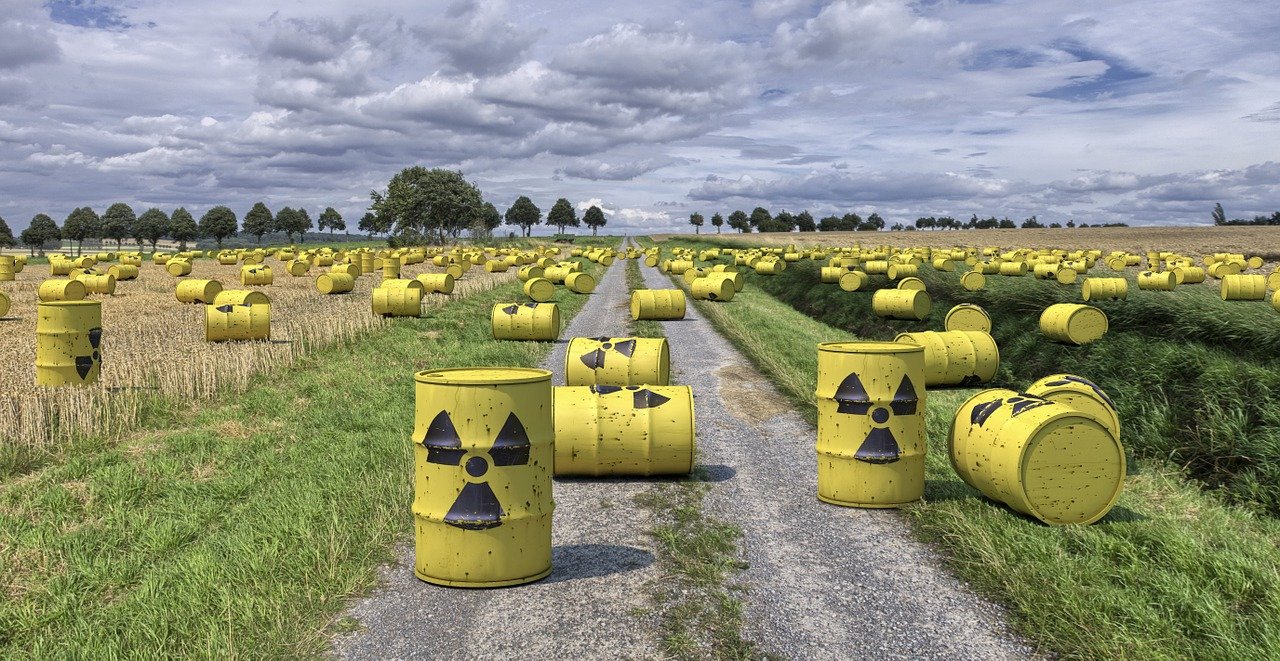
At the end of 2021, Australian researchers announced the creation of the Earth’s Black Box, modeled on an airplane’s black box, to collect data, notably climate data. The box will be completed this year and will inform future generations of mistakes not be repeated, with information such as land and sea temperatures, ocean acidification levels, species extinction, number of people in the world, military spending, energy consumption and news-related information. This illustrates the growing need to communicate with future generations. Other sectors are concerned, on different scales, such as the nuclear industry. Communication on the burial of nuclear waste, whose lifespan of several thousand years for the most radioactive, goes far beyond the next generations. In France, the National Agency for Radioactive Waste Management (ANDRA) has been entrusted by the Nuclear Safety Authority with the task of maintaining the memory of the Bure site, a potential future storage center for industrial nuclear waste, for at least five centuries after its closure.
The consideration of communication on very long-lived assets stems in particular from the nuclear sector, for which the risks of exposure, contamination, but also proliferation are significant and imply taking into account an unprecedented and uncommon duration. The vagaries of civilization history such as armed conflicts or budget cuts, climatic events and geological time must be taken into account when judging the capacity of a semiotic device to communicate the dangers of nuclear waste storage sites for millennia to come. The medium of transmission, the language or code used, and the way in which messages are transmitted, are at the heart of the problem.
Digital solutions seem to have their limits and lack efficiency when used alone. Hard disks, for example, do not have such a long lifespan and technology. They are likely to evolve, making readers and software capable of deciphering them obsolete. Combining a technological solution with “permanent paper” could be a solution. Made from pure cellulose, with a basic pH and resistance to oxidation, such a document, printed with a stable ink, could be preserved for 600 to 1,000 years. The detailed memory of the historical storage site in the Channel, intended for experts, already benefits from such a solution. Until now, certain organizations such as ANDRA have used sapphire disks, developed and marketed in particular by the Arnano company. They are able of withstanding at least 2000 years and a temperature of 1700°C. But this solution does not guarantee that the message will be understandable for future generations. A universal and simplified language could alleviate this problem. In the United States, researchers have thought of bristling the center of New Mexico with gigantic spines carved into granite and drawing a huge skull and crossbones, visible from above, in the landscape. But future generations must be able to decode this message. It can also be expected that in the next few years blockchain-based solutions will emerge, like SLAFKA, the world’s first blockchain prototype for safeguarding nuclear material.
There is a great technological and industrial need at this level, for the nuclear sector in particular, but more generally to create a multimillennial memory and communicate with the future. Very few companies and startups have taken up this subject and this may be linked to the difficulty of identifying the responsible of this memory. As far as public health is concerned, it could be the duty of national or supranational institutions. But how can we envisage an institution capable of taking charge of the management of nuclear waste for thousands or even millions of years to come? The economic model for such a solution remains difficult to envisage as long as institutions or private companies do not take on this type of responsibility. This may soon happen, as in March 2020, the OECD published a report entitled Preservation of Records, Knowledge and Memory (RK&M) Across Generations, which addresses the issue of radioactive waste over time and proposes a specific methodology to address it. The initiative offered a number of suggestions, such as libraries, time capsules and physical markers. The need is real, and it is gradually spreading to more and more sectors.
2 Key Figures
There are approximately 6.6 million m3 of nuclear waste in Europe
The world nuclear waste report (2019)
The Technetium 99, one of the most important fission products, has a half-life of 220,000 years
The Technetium 99, one of the most important fission products, has a half-life of 220,000 years
3 startups to draw inspiration from

Arnano
The startup relies on the properties of sapphire disks and microscopic engraving to provide data storage for very long periods. This solution is already being used in the nuclear industry to store radioactive waste storage sites or nuclear power plant plans to ensure that the information can be read by future generations.

Ternoa
The startup Ternoa’s solution allows to create time capsules from a smartphone and to easily add photos, videos or messages. Each time capsule is encrypted and stored in a decentralised way on the blockchain, for future transmission to the chosen beneficiaries.
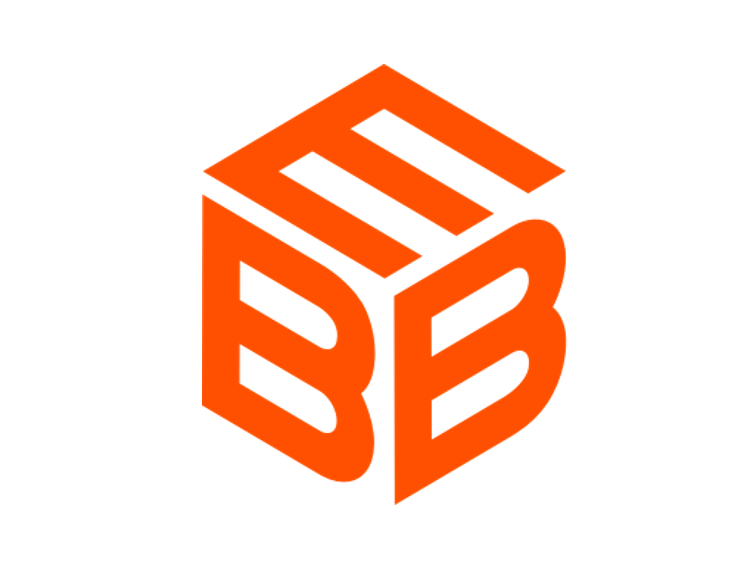
Earth’s Black Box
The project is a collaboration between the University of Tasmania and a communications firm called Clemenger BBDO. It will be able to collect a large amount of information on the climate and current events, similar to an aircraft’s black box. Its outer layer will be made up of 3″ thick steel.
Interested in a startup landscape or in an insights report?
Please fill out our contact form so that we can get back to you very quickly with our product offer.
Want to subscribe to our 123Fab?
Fill out our form to receive the latest insights into your inbox.
123Fab #77
1 topic, 2 key figures, 3 startups to draw inspiration from
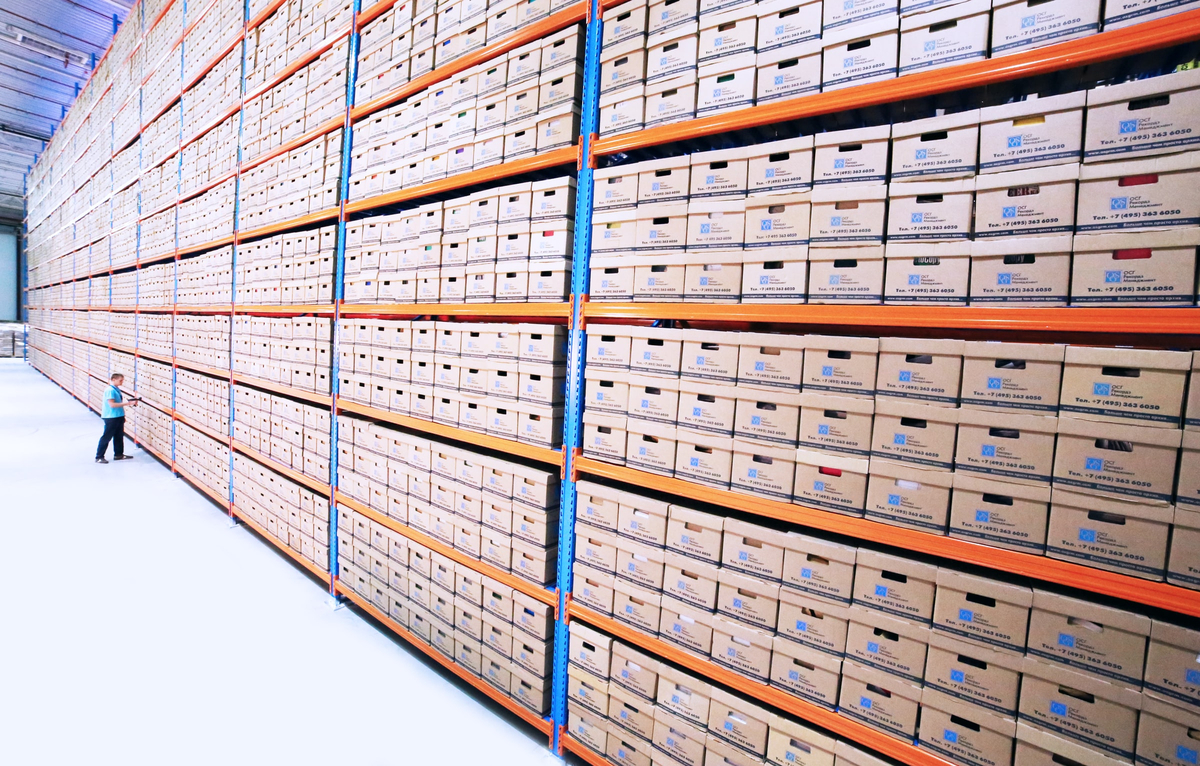
In recent years, the number of digital buyers has skyrocketed reaching a total of over 2 billion people worldwide in 2020. While e-commerce was already a growing industry before pre-Covid, the pandemic has fast-tracked its growth making e-shopping experiences a key differentiating factor. Traditional brick-and-mortar companies have been pushed to adopt such experiences, with Digital Vertical Brands (DNVBs) gaining ground.
This has had an impact on the infrastructure and supply chain required to distribute these goods. Retail giants (Amazon, Cdiscount, Alibaba, or Ocado) have made operational excellence their core business, accustoming their clients to simple, very fast, and very reliable home deliveries. At the same time, the vast majority of companies selling products online do not have warehouses, picking and packing centers, and distribution networks to deliver their products to the end customer. This is because, fulfillment infrastructure, while essential, is not flexible for small companies. Once maximum storage is reached, it can be complicated not only to find a new warehouse, but also to connect the company’s IT to the warehouse, and to recruit and onboard a new team in a short timeframe. Such a barrier has led to the emergence of startups offering externalized fulfillment solutions. These solutions can be end-to-end, handling the delivery of the package once the customer has completed its order, through to managing the storage, shipping and sometimes the return of goods.
Yet, these startups, which are tackling the fulfillment market, have had to compete with large, long-established companies by offering flexible, tailor-made services. In order to be as efficient and fast as they are, they manage a large number of small warehouses so that the stored product is never too far from the delivery location, reducing both costs and delivery times. ShipBob and ShipMonk are the two leaders in this segment, both of which have a large number of warehouses throughout the US but also in Canada, Mexico and Europe. They target all e-commerce companies regardless of the industry and size. ShipBob even provides plans for startups shipping less than 400 orders a month. They handle every aspect of the supply chain, from order and inventory management to analytics reports to review performance and get insights on their client’s products. On the other hand, some startups like MasonHub choose to focus on a particular industry, in their case beauty, fashion, and wellness. They also own several warehouses across the US and target retailers of all sizes. But in addition to storing the products, picking, packing, and shipping them, they also handle the returned products from inspection to refund.
One of the challenges faced by startups providing fulfillment solutions is the high cost of owning warehouses in strategic locations. Thus, some startups bypass the latter by partnering with warehouse operators rather than owning the warehouses themselves. These are so-called “asset-light” fulfillment startups. Flexe, which has built one of the largest logistic networks of fulfillment centers (more than 1,500 locations in North America), connects retailers to warehouse operators in North America through its platform. It helps them find new storage space in a flexible way and at specific locations, enabling 2-day or same-day delivery to their customers. In turn, warehouse operators can increase their revenues by having a higher occupancy rate and reach new customers, such as smaller companies, that they have struggled to attract. Deliverr provides a solution that connects directly to the sales channels of ones choice such as Amazon, Facebook, or Instagram and enables for fast shipping options such as 2-day delivery of ones product. Byrd, on the other hand, focuses on the European market, with more than 20 storage locations in their network. Their solution has two main upsides: the first is that they provide cross-border fulfillment, allowing their customers to reach a larger base of potential clients. The second is that they handle product returns, which can be a logistical nightmare for retailers and sellers. The main drawback of these solutions is that they become expensive if the products remain in the warehouses for a long period of time. Companies using these services must either store as little as possible of the goods that are not selling fast enough, or stop selling them. And predicting which item will be selling the fastest can be a very challenging question.
Micro-fulfillment is another type of fulfillment process that involves the automated handling of perishable goods in very small centers. This solution is particularly suitable for large agrifood companies that sell some of their fresh produce online. Fabric provides micro fulfillment solutions for online grocery shopping. Their micro-fulfillment centers use AI-powered robotic arms to perform basic tasks such as transporting bags of items within the facility and handling packaged items, while manned stations handle loose and more fragile products. Their station also provided the world’s first 1-hour delivery fulfilled by robots. Takeoff also provides automated micro fulfillment centers. Their solution is said to take up one-eighth of a traditional store’s space, allowing them to be built in strategic locations to reduce last-mile delivery time and cost. They claim that their solution can assemble an average order in less than 15 minutes which is ten times faster than manual picking in a store.
Considering the growth rate of e-commerce, whether for retail products or groceries, it seems that adapting our way of delivering products to this trend is inevitable. Investments are pouring in to fuel this transformation. Last June, ShipBob raised $200M to extend its geographical reach and invest in R&D and ShipMonk raised $290 6 months earlier. Last November deliverr’s valuation reached $2bn with a $250M Series E funding. Earlier in 2021 Flexe raised 65M€. Thus, the fulfillment industry has clearly seen the changes of customer behaviour over the last few years and is preparing for a massive transformation. The role of classic shopping malls and grocery stores remains uncertain in this transformation.
2 Key Figures
2k+ e-commerce fulfillment startups
Registered by Tracxn
By 2028, the global e-commerce fulfillment market is expected to reach $168.7bn
Compared to $86.44bn in 2021, growing at a CAGR of 10% – Grand View Research
3 startups to draw inspiration from
This week, we identified three startups that we can draw inspiration from: MasonHub, Byrd, and Takeoff. |

MasonHub
Founded in 2018, MasonHub provides of inventory management services allowing brands total visibility into their omnichannel supply chains. The company allows users to connect their e-commerce tools, see fulfillment activity, oversee inventory, ship quickly and affordably.

Byrd
Based in Vienna, Byrd developed an e-commerce fulfillment platform intended to offer scalable logistics to every online shop so that they can fulfill their potential. The company’s application offers e-commerce shop integration, online real-time stock tracking, and first-mile shipping services.
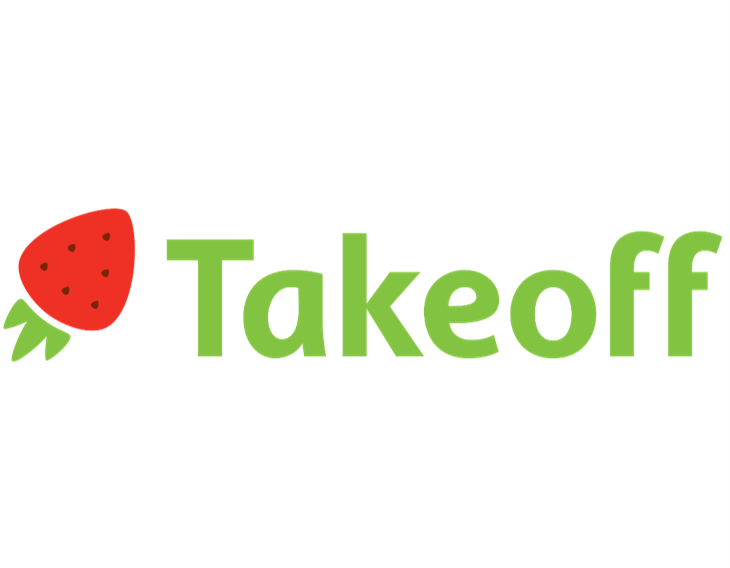
Takeoff
Takeoff was founded in 2016 and developed an automated grocery fulfillment system designed to fulfill orders using robots in micro fulfillment centers. The company’s platform helps customers find and select products easily, enabling retailers to lower last-mile and assembly costs.
Interested in a startup landscape or in an insights report?
Please fill out our contact form so that we can get back to you very quickly with our product offer.
Want to subscribe to our 123Fab?
Fill out our form to receive the latest insights into your inbox.
123Fab #75
1 topic, 2 key figures, 3 startups to draw inspiration from

Earlier this month, the CISA (Cybersecurity & Infrastructure Security Agency) issued a “shields up” warning to US companies to upgrade their cybersecurity assets due to the increased risks associated with the growing tension between Russia and Ukraine. As a matter of fact, the number of attacks has skyrocketed in recent years and data protection is becoming increasingly complicated. The rise of remote working has also made data protection harder by extending greatly the amount of information transferred and the number of external platforms used to share and store documents. Thus, cyberattacks are not only a financial threat, they also call into question the public credibility of the company and can even put people’s lives at risk. Fortunately, numerous startups are entering the space.
Startups that help companies protect their industrial data with cutting-edge technology and software are addressing a number of uses cases. First, some strive to educate employees on phishing for example, while others help strengthen their hardware and software assets. Solutions include automatic intrusion detection, blocking scenarios to limit the propagation as well as counter-attacks to seek information on the hacker and the way it succeeded to get it. As factories use increasingly more IoT technology, the size and complexity of the networks and communications that need to be monitored are growing. As such, some startups ambition to protect these networks as a whole. Cybus, for example, has developed connectivity software for smart factories that use Industrial Internet of Things (IIoT), to help them secure the connection between different machines, different databases, the company’s ERP as well as its connection to external services. That way, industrials can carry out quality management, condition management, or predictive maintenance in a safe manner. Dragos provides an industrial cybersecurity platform that contains all the necessary capabilities for vulnerability assessment and management, threat detection, investigation and incident response. It draws insight on previous cyberattacks to track and profile various threat activity groups to determine how they operate and how to best respond. Veracity offers a zero-trust network management platform that allows companies to define exactly which devices can communicate with which and avoid unwanted information communication. In addition, the fact that the authorizations are given to a specific device rather than a port number on a switch makes the network flexible. A machine can be moved and plugged at another side of the network and keep the authorizations and communication rules intact. Even in the case of a malfunction of the machine, the information can be rerouted, and a warning is sent to check the device.
A good example of an industry where cybersecurity is critical is automotive manufacturing, as it is particularly vulnerable to cyberattacks and has a higher stake in protecting its networks. For example, it is essential for connected car manufacturers to avoid any tempering of their cars as their passengers’ lives are in their hands. Startups are tailoring offers specifically to fit their needs. Upstream Security provides a cybersecurity and data management platform for connected vehicles. Their cloud-based solution analyzes and reports the potential security risks and has an integrated workflow to respond in the event of an attack. More than just protecting the vehicles from cyber-attacks, Upstream analytics provides insights on mobility data to help OEMs, Tier-1s, or Tier-2s to better understand their fleet. One upside of their solution is that it does not require adding software or hardware within the vehicle, their technology uses the data already produced by the connected vehicles to monitor the various systems status. Cybellum, on the other hand, provides digital twins of the car’s software architecture in an attempt to detect potential security flaws. Its solution enables car manufacturers to test any new software or feature on the digital twin to detect any weaknesses in the integrated system before deploying it on the fleet. The digital twins are continuously tested for flows as Cybellus adds new potential attack methods to its database.
The average annual budget spent by companies on cybersecurity ranges from $500k for smaller companies to millions of dollars for larger ones. While these amounts seem huge, they are still affordable compared to the colossal losses that can result from a successful cyberattack. The high budget and urgency of the matter has made cybersecurity a critical topic for corporations. As an example, Microsoft acquired CyberX to enhance its IoT securing technology. Similarly, earlier this month, Forescout acquired CyberMDX to enhance its security focus in the healthcare industry. Finally, last year, cybersecurity giant Fortinet partnered with Dragos to integrate its technology into Fortinet’s software.
To conclude, as technological equipment and networks become more complex, the number of potential security breaches grows. Companies of all sizes have realized that cybersecurity is critical and that most of them cannot do it in-house due to a lack of manpower or expertise. That is why startups have a great role to play in mitigating this risk by offering ever-new protections to stay one step ahead of malware.
2 Key Figures
140+ Industrial cybersecurity startups
Registered by Tracxn
By 2040, the industrial cybersecurity market is expected to reach $22.5bn
Compared to $16.9bn in 2020, growing at a CAGR of 5.8% – Markets and Markets
3 startups to draw inspiration from
This week, we identified three startups that we can draw inspiration from: Dragos, Veracity, and Cybellum. |

Dragos
Dragos designed a security software that provides critical visibility into ICS and OT networks so that threats are identified and can be addressed before they become significant events, its solutions are optimized for emerging applications like the Industrial Internet of Things (IIoT), enabling its clients in power and water utilities, energy and manufacturing industries to establish a resilient and adaptable security posture.

Veracity
Veracity provides industrial network intended to brings visibility, control, and remediation to industrial networks. The company’s network is secure-by-design and deny-by-default that moves beyond detection and alerts cyber events into a resilient network that reduces the attack surface, enabling businesses to manage and ensure secure communication between the connected devices. |

Cybellum
Cybellum developed a platform designed to provide software risk assessment by detecting vulnerabilities automatically without source code. The company’s platform delivers an agentless and on-premise end-to-end program that gives fully automatic forensics and visibility into each incident without the need for cyber experts to operate it, enabling users to enjoy high-quality web security and safe surfing. |
Interested in a startup landscape or in an insights report?
Please fill out our contact form so that we can get back to you very quickly with our product offer.
Want to subscribe to our 123Fab?
Fill out our form to receive the latest insights into your inbox.
